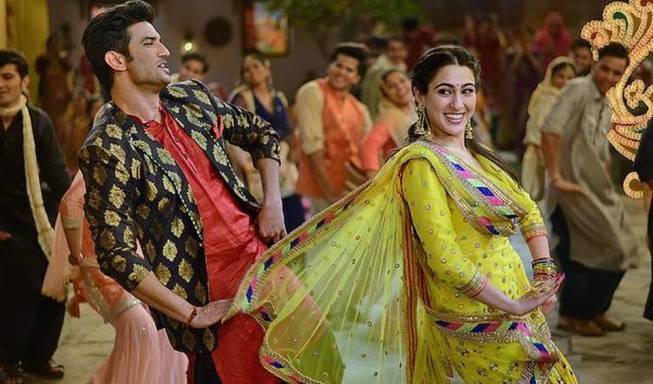The opening credits set to the tune of a new age Amit Trivedi-Amitabh Bhattacharya bhajan, ‘Namo Namo’—“Seepiyon ki ontt main, Motiyan ho jis tarah; Mere mann mein Shankara, Tu basa hai uss tarah” (Lord Shankar lives in my heart, just like a pearl lies hidden in the shell)—the overarching imagery of Shiva, breathtaking aerial shots of the Kedarnath yatra and panoramic views of the shrine framed against the snow capped, majestic mountains. Kedarnath starts off with the promise of being a modern, hypnotic celebration of religion. But it quickly gets down to separating individual faith and belief from organised religion.
A Muslim pitthu (porter) Mansoor (Sushant Singh Rajput), who transports pilgrims and their luggage to and from Kedarnath, has a deep connect with Mahadev despite saying his namaaz every day. And the pandits of the area, getting together to open huge hotels in the fragile valley, are turning their homeland into an ecological disaster and their own religion into business; all in the name of progress and development.
There are many such noble, sensible, contemporary and contentious issues that Kedarnath tries to raise but they somehow get buried in a wishy-washy script that hurtles towards a clumsy, protracted climax. The excess of happenstance, overt sentimentality, manipulative and extremely simplistic brushstrokes end up taking away, rather than bolstering the inherent emotional heft in this combination of disaster drama and love story between a pandit ki beti Mukku (Sara Ali Khan) and Mansoor.
There are tracks which beg for more exploration. Like the women trying hard to take on the embedded Pandit family patriarchy. Or the tantalising back story of a fiancée who shifts from marrying the elder sister to zooming in on the younger one. Or the Muslims, integrated in the traditional fabric, being edged out now by the new radicalised Hindu youth. Nishant Dahiya catches the eye as the bigot Kullu. His representation though, is too convenient and stereotypical, and could have done with some layers rather than staying stuck in the conventional villain mode. Much as the good Muslim has to, as usual, pray for India in the Indo-Pak cricket match, still has to prove his loyalty to the nation, as he has in countless Hindi films, and has to die countless deaths, literally and metaphorically, for the larger good of Hindustan.
Its larger intent aside, Kedarnath has been the centre of attention for being Sara Ali Khan’s launch vehicle. The girl has the naturalness, chutzpah, an uninhibited openness and spontaneity reminiscent of her mother Amrita Singh. All she needs to do in the next film is get more easygoing about it. As against the fearless and free-spirited girl is the shy boy who is not afraid of crying. However, Sushant Singh Rajput feels lacklustre than invested as Mansoor.
“Hamesha se aapke saath rahe hain, beech mein kahan se aa gaye (We have always lived together with you. Why talk of us as sticking sorely in the middle)?” asks Mansoor at the interval, perhaps the most, and only, powerful moment in the film. At times films can acquire an unforeseen significance purely for when they are watched. Seeing Kedarnath on December 6, the day in 1992 that, among other things, changed the social fabric of India, the overarching message resonated with me: that dividing people along religious lines will only lead to pralay (catastrophe). But, going by the online hate targeted against Kedarnath for being “insensitive” to the 2013 Uttarakhand tragedy and turning it into a metaphor is a proof that we are content remaining blind to the bigger picture; that we are not far from disaster but sitting right on top of it.




